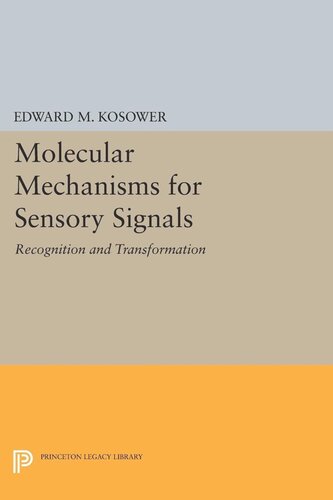

Most ebook files are in PDF format, so you can easily read them using various software such as Foxit Reader or directly on the Google Chrome browser.
Some ebook files are released by publishers in other formats such as .awz, .mobi, .epub, .fb2, etc. You may need to install specific software to read these formats on mobile/PC, such as Calibre.
Please read the tutorial at this link: https://ebookbell.com/faq
We offer FREE conversion to the popular formats you request; however, this may take some time. Therefore, right after payment, please email us, and we will try to provide the service as quickly as possible.
For some exceptional file formats or broken links (if any), please refrain from opening any disputes. Instead, email us first, and we will try to assist within a maximum of 6 hours.
EbookBell Team

4.1
50 reviewsPursuing the questions of how we learn and how memory is made, Edward Kosower introduces a novel and rich approach to connecting molecular properties with the biological properties that enable us to write and read, to create culture and ethics, and to think. Here he examines what happens within a single cell in reaction to external stimuli, and shows the parallels between single cell and multicellular responses. To address the problem of "learning," Kosower explains the molecular mechanisms of responses to input from taste, olfactory, and visual receptors. He then shows how these and other processes serve as the basis for memory. This study covers such signals for the molecular process of learning as pheromones (the molecular signals mediating behavior), light (activates the G-protein receptor, rhodopsin), and acetylcholine (opens the nicotinic acetylcholine receptor). Kosower's discussion of the structure and function of these complex molecules has direct implications for such areas as molecular neurobiology, bioorganic chemistry, and drug design, in elucidating approaches to the structure of drug targets.
Originally published in 1991.
The Princeton Legacy Library uses the latest print-on-demand technology to again make available previously out-of-print books from the distinguished backlist of Princeton University Press. These editions preserve the original texts of these important books while presenting them in durable paperback and hardcover editions. The goal of the Princeton Legacy Library is to vastly increase access to the rich scholarly heritage found in the thousands of books published by Princeton University Press since its founding in 1905.